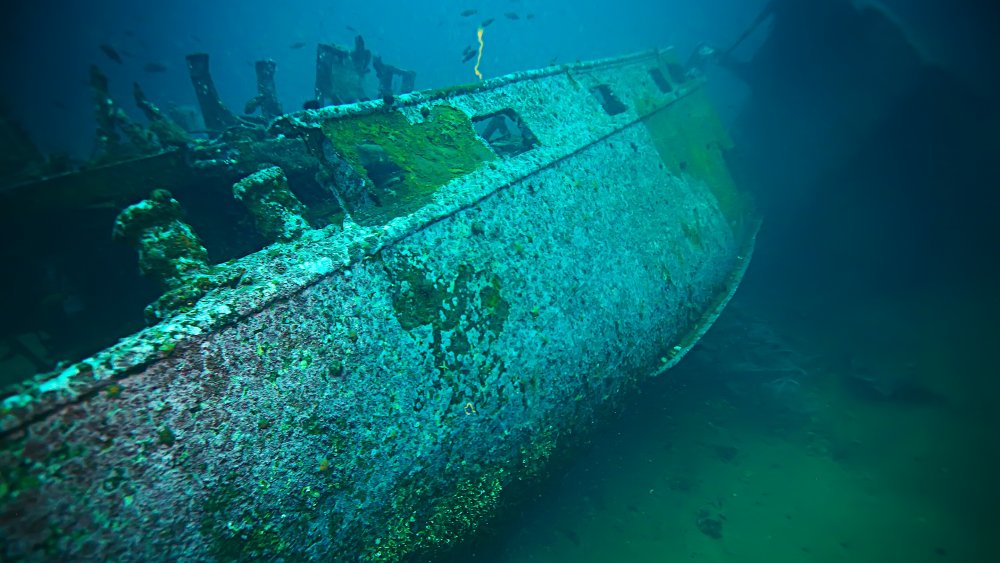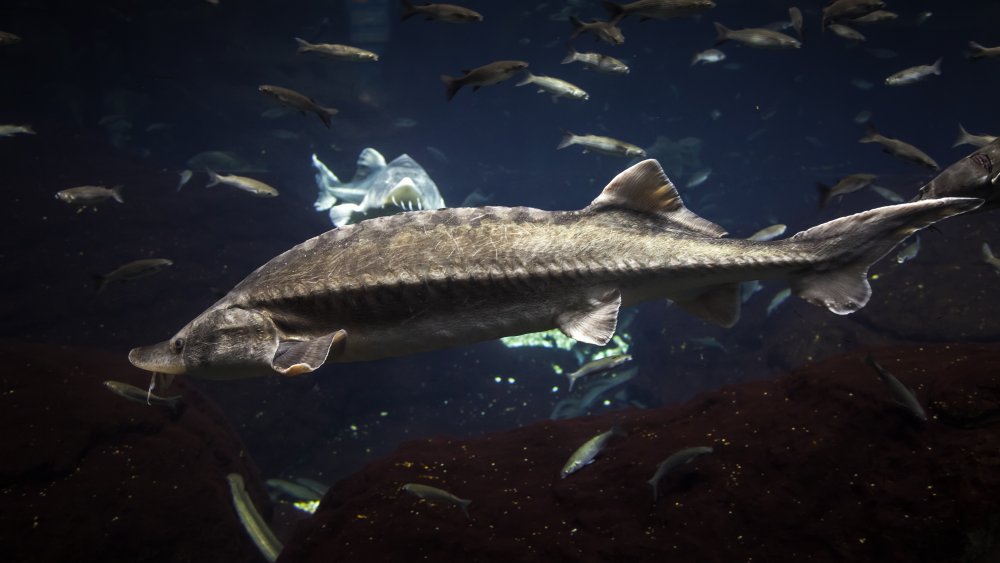Why A Rare Fish Was Found Aboard A 500-Year-Old Shipwreck
What were the remains of a two-meter-long sturgeon doing in a barrel found on a 500-year-old shipwreck found in the Baltic Sea? No, wait. First: Exactly how were the remains of the freaky huge fish preserved for over half a millennium? According to CBS News, the Swedish archaeologists who made the "unique" discovery in 2019 said that the low salinity and oxygen levels of the Baltic Sea made the preservation of the fish and wreckage possible.
"The wreck is in such good condition because of the strange Baltic environment," said archaeologist Brendan Foley of Lund University. "The low salinity here is unsuited for shipworm, which eat wood in the world's ocean system. The sea floor is a fine clay, ideal for preserving organic material, and the low dissolved oxygen levels further contribute to preservation of organics."
That's the how. But what's the big deal about a fish being found in an old boat in the sea? The archaeologists believe that the sturgeon was part of a royal power play that ended up an epic fail at the bottom of the sea.
One ancient king's loss is an archaeologist's treasure
Prized for its roe, the sturgeon is the most critically endangered group of animal species on the planet, according to the International Union for Conservation of Nature (IUCN). Its populations have been decimated by what the IUCN describes as the "unrelenting exploitation for black caviar — the sturgeon's unfertilized eggs — considered the finest in the world." The big fish had a classy reputation back in the day as well, which is why Denmark's King Hans took this one with him in 1495 when he sailed to Sweden in hopes of uniting the three Scandinavian countries under his reign. Foley and his team think the fish was "part of Hans's effort to subtly influence the Swedish nobles to join the Nordic Union."
As Smithsonian magazine tells us, the king was not aboard the ship that sank, but "the accident proved disastrous for Hans's negotiations with Sweden." The loss of the fish may have been the very thing that caused the delay of union, which did happen later, only to be undone when Sweden changed its mind and seceded in 1523.
Researchers have been able to glean tons of valuable new information from the shipwreck. "For me, this has been a glimpse of what the Baltic Sea looked like before we interfered with it," said Maria C. Hansson of Lund University, a molecular biologist on the project. "Now we know that the Atlantic sturgeon was presumably part of the ecosystem."

